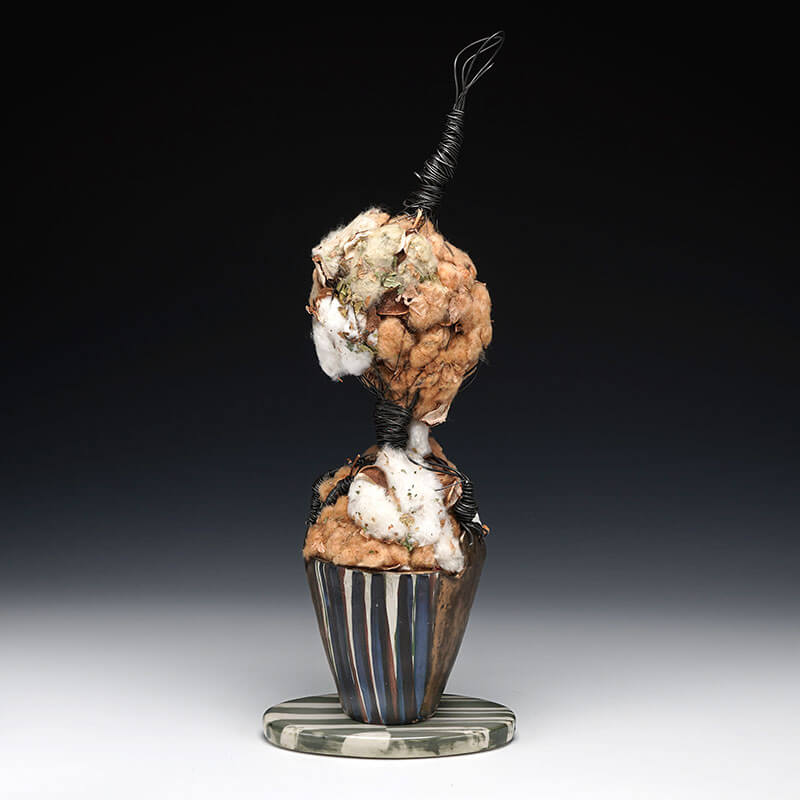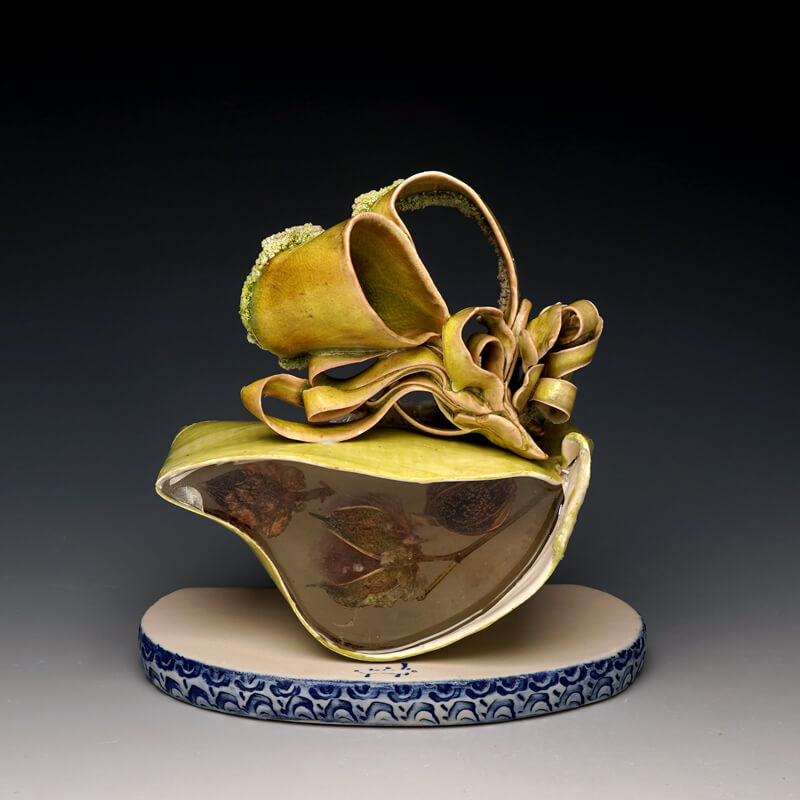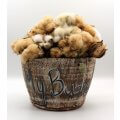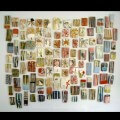
Red Lodge Clay Center – Short-Term Resident (MJ Do Good) 2014, Short-Term Resident (ASPN Mentor) 2024
Chotsani Elaine Dean is an Artist and Assistant Professor of Ceramics at the University of Minnesota. Born in Hartford, CT, Chotsani received her BFA in Ceramics from Hartford Art School and Master’s of Fine Arts from Sam Fox School of Art at Washington University in St. Louis.
In the summer of 2021, Chotsani will be in residence at the John Michael Kohler Artist Residency, Pottery. In 2014, Dean was the inaugural MJ DO Good resident at Red Lodge Clay Center in Montana. Also, Chotsani was awarded a 9-month Teaching/Research Fulbright Scholar grant in India 2012-13, host institution Banaras Hindu University in Varanasi, India. During this time Chotsani, traveled throughout India conducting workshops at Sanskriti Kendra in New Delhi, Krishnamurti Foundation/Raj Ghat Besant School, Varanasi, Kriti Gallery, Varanasi, lectures at Faculty of Art History, Banaras Hindu University, Varanasi and Faculty of Visual Arts University of Baroda, Baroda and artist-in-residence at Clayfingers Pottery, Thrissur, Kerala.
Chotsani has lectured and exhibited widely, selected for the 2019 South Carolina Biennial at the 702 Center for Contemporary Art, McMaster Gallery at the University of South Carolina, Appalachia State University, Kriti Gallery, Varanasi, India, Art Chamber, Goa, India, Aurodhran Gallery, Pondicherry, India, Hans Weiss Newman Space, Manchester, CT, Windsor Art Center, Windsor, CT, Hunterdon Museum of Art, Clinton, NJ, Gallery on the Green, Canton, CT, Silo Gallery, New Milford, CT among others. In 2010, Dean was awarded a Connecticut Arts Grant from the state of Connecticut. Dean has taught at various institutions, Three Rivers Community College, University of Connecticut, Connecticut College, Quinnipiac University, Hartford Art School and was Studio Manager at Wesleyan Potters in Middletown, CT.
The many, complex, layered realities of my communal ancestry’s history and visual archives set forth the foundations of creative purpose in my studio practice and research. A significant part of my research is rooted in quilts from Slavery (chattel enslavement) thru the Antebellum period, made on and off cotton plantations by enslaved and free African Americans through the mid-20th century. These quilts and the material that gives them life, cotton, serve as a historical source and point of departure, I use to explore and comprehend this dreadful time in America’s history. These quilts are of particular interest to me for their uniqueness in origin, evolution, aesthetics, visual endurance, range of creative techniques and processes. Also important is the commodity, cotton, from which the textiles are made to make the quilts and what my enslaved ancestors cultivated and picked. Cotton, the commodity at the center of my ancestry, led me to the global history, trade, and impact of cotton through its production to textiles and trade. Encountering the various cultures, economies and time periods connected to cotton continues to take through non-linear timeline journeys from the past to the present. These diverse and inter-connected histories permeate the work I make.
Quilts from these time periods reveal and preserve the historical blending of aesthetics, emergence of distinct material culture and traditions. The visual and historical synthesis of various craft traditions, historical events and commodities, quilts, the cotton trade, the Civil War to the Civil Rights Movement, and the vast realm of textiles inform and shape my visual ideas and approach to the spectrum of ceramic materials and mixed media.
Adaptation, resourcefulness, survival, and triumph are what I appreciate when I consider the fullness of these quilts, their makers, and the history from which they emerge and have moved through time. My work begins with the realities of those who sewed and stitched more than quilts; those who stitched and sewed a resolute history and legacy that has gifted freedom, personhood, and rich visual language to our world. The fullness of this important history I am indebted to has afforded me deep meaning as an artist. I strive to sustain and honor the many gifts of my personal and collective history embedded in my communal ancestry’s chronicles.
















